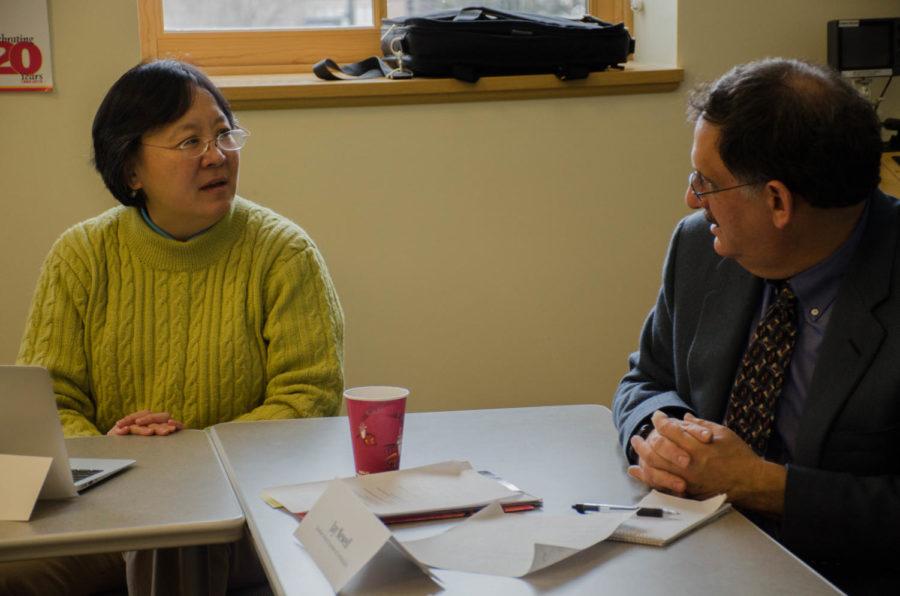International students discuss transition to ISU
February 25, 2015
Moving to a new country, learning and using a foreign language and coping with living in a different culture are all everyday experiences for international students at Iowa State.
A panel made up of faculty, staff and students met to discuss life as a student from outside the U.S on Feb. 24. The meeting was led by Jay Newell, assistant professor of journalism and mass communications.
Three students were on the panel — Bohan Li, senior in mechanical engineering from Changsha, China; Hanxiao Hu, junior in journalism and mass communication from China’s Hubei Province; and Lea Johannsen, senior in history from Ames.
Suggestions for lecturers and the university could help enhance the college experience for international students.
“Better Wi-Fi,” Li said, who also said he wanted to see students have more academic help available.
Hu said professors can be instrumental in helping international students make social connections with domestic students in the classroom.
“It is really hard to get to know someone,” Hu said. “We feel lonely, shy, every feeling we have is combined together.”
Newell also asked about assignments given in class and whether they should have international examples or views within assignments.
Li said problems sometimes arise for international students trying to understand examples provided in homework. Some things Americans take for granted, like “tractors,” and “hog farms,” were foreign and abstract concepts to him in his first years at Iowa State.
Li said he wished for international holidays to be taken into account by professors and faculty. He said moving tests, quizzes and assignments to accommodate for holiday observation would be preferable.
“I wish that professors would find more ways to have interactions between American and international students,” Johannsen said. “We live in a global environment.”
Hu said she wanted to see more equality with American students in how international students were perceived.
“We are all students and we are all here to learn,” Hu said.
Hu suggested international students get involved in clubs at Iowa State, and in doing so they would increase their chances of getting a job in the U.S. after college. She also recommends international students simply go to class and not be shy.
Johannsen said studying English slang may help international students better understand Americans and make friends. She cited her experience learning Chinese as inspiration for this advice.
Li suggested using alternative resources to help international students learn culture and language.
Li said checking out websites like “College Humor” or “Reddit” is a useful way to become familiarized with English slang and informal language.
Newell said he’s always looking for better ways to serve all of his students.
“Acknowledging through examples and assignments that we’re in a big world here,” Newell said.
Newell said that professors could use examples from outside the U.S. when giving the students classwork or giving a lecture, and lack of time is the biggest issue facing both international and domestic students.
International students from 110 countries made up more than 10 percent of the 34,732 ISU students during the fall of 2014. Chinese students make up the single largest group of international students. When including Hong Kong and Taiwan, the number of students rises to 1,967.
Newell said international students are very brave for moving from what they know and learning in a new place, and that both domestic students and international students should interact and learn from one another.
“There is this gap, this barrier that people think is there but it’s not really there,” Newell said.

















